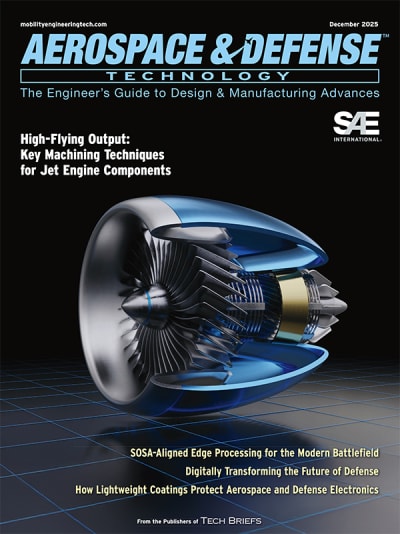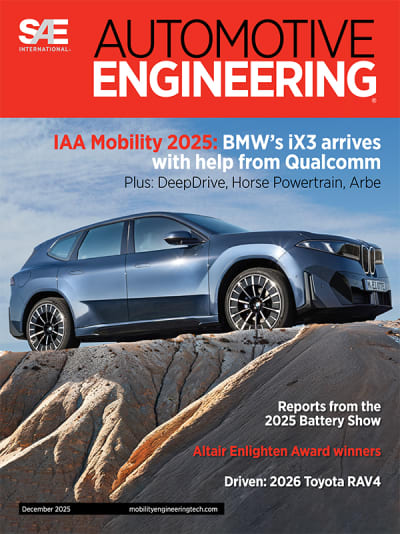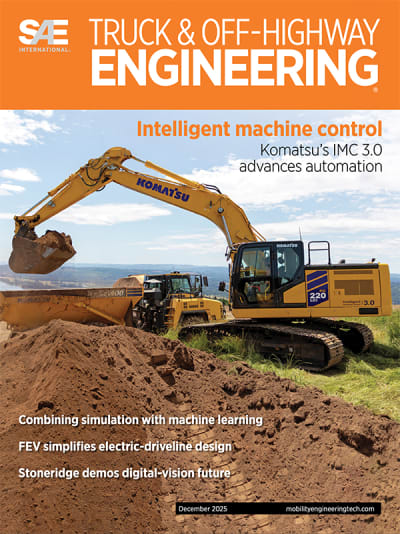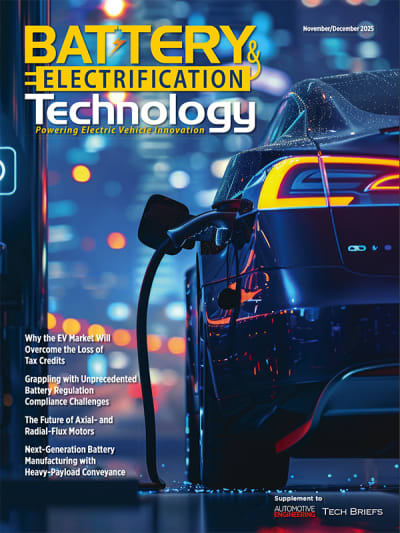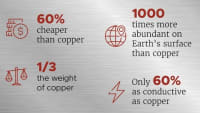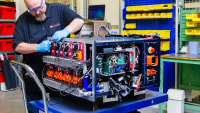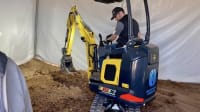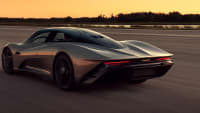Autonomy and Electrification: A Perfect Match?
Combining SAE Level 4/5 functionality and EV platforms brings challenges — and also opportunities for cost reduction and systems optimization.

By 2030, nearly 25% of all miles driven in the United States could be in shared autonomous electric vehicles, according to a 2017 study by the Boston Consulting Group. The majority, if not all, of the vehicles offering SAE Level 4/5 capability that have been announced or are currently in fleet testing, have electrified powertrains, either battery electric or hybrid.

Electric propulsion is indispensable for autonomous vehicles because of higher fuel efficiency and reduced CO2 emissions. It’s an easier platform to support drive-by-wire systems needed for vehicle autonomy. And as battery prices continue to fall, electric offers lower cost of ownership and maintenance, especially for fleet owners in a ride-sharing ecosystem.
However, the integration of vehicle autonomy with electrification isn’t a matter of simple plug-and-play manufacturing. Among the key challenges is the power consumption of sensor arrays and data processing and its potential impact on electric-drive range. But there are also opportunities for cost reduction and optimization that come with using electric powertrains in Level 4/5 autonomous vehicles.
Autonomy and EV range
Fully autonomous (SAE Level 5) vehicles have many more electronics—sensors, sensor fusion box, ECUs for drive-by-wire systems—compared with Level 0-3 vehicles. With a fully electric powertrain, the electronics that enable autonomous functionality require power from a high-voltage battery through a DC-DC converter, for the 12-V line. This increased burden reduces electric-drive range and poses a critical development challenge.

On the other hand, machine driving is expected to deliver a smoother drive pattern compared to human-driving behavior. Smoother drive cycles allow more efficient use of battery energy, delivering a greater electric drive range. These tradeoffs become a lot more interesting if we quantify the end effect!
Consider the example of a Level-5 autonomous, electric, compact sedan with 30 sensors (lidars, radars, and cameras), and one sensor fusion box with centralized, raw sensor-data fusion based on the DRS360 architecture (https://www.mentor.com/ embedded-software/drs360), with a power consumption of 100 W. Total load for this example is 400 W. How the drive profile will change for a connected autonomous vehicle is unknown and is currently an area of active research.
As automobile OEMs are increasingly relying on virtual traffic scenarios and vehicle driving simulations for autonomous vehicle testing, simulation tools such as Siemens’ PreScan can be of significant value in determining what level of drive profile smoothing to expect from machine driving.
For this example, we’ll use two scenarios from the simulated drive-cycle smoothing research conducted by Dr. Kara Kockelman’s group at the University of Texas in Austin (http://www.caee.utexas.edu/prof/kockelman/). Scenario 1 represents a moderate smoothing of the drive profile throughout the cycle, but especially at the points of complete stop and accelerate. Scenario 2 represents significantly more smoothing to a point where the connected/autonomous vehicle can anticipate upcoming stops during city drive and slow down/accelerate accordingly without coming to complete stop. For both these scenarios, the overall commute time has no change.
For city driving at 25o C ambient conditions and for this specific vehicle study, our analysis showed that the added electronics power demand on the main battery resulted in a nearly 16% reduced drive range, as illustrated in the accompanying graphs. Reduction in drive range will be far higher if a higher power consuming, sensor-fusion box is used. For comparison, the power demand rate of the Nvidia PX2 is 250 W.

Scenario 1 offers 8% increase in electric drive range by better allocating battery energy to the wheels but still results in 92% electric drive range for a Level 4/5 autonomous EV compared to a Level 0 (manually driven) car. The significantly more smoothing in scenario 2 delivers 110% electric range for a Level 4/5 autonomous vehicle compared to a Level 0 electric vehicle.
This analysis shows that the overall electronics load, especially power (and thermal load) of the sensor fusion box, needs to be minimized. More importantly, depending on the change in the driving profile and what manufacturers are able to achieve through their machine-learning algorithms, the overall electric powertrain energy efficiency (i.e., the battery design) needs to be improved or the battery pack size resized. Either of these solutions can help reduce cost.
These numbers will differ depending on the characteristics of the powertrain (battery and motor design), vehicle size, electronics integration, and EE configuration of the vehicle, among other factors. But the underlying opportunity for e-powertrain optimization, outlined here, remains valid.
Other factors, such as vehicle platooning, especially for trucks/commercial fleet highway driving, can further enhance drive range, as shown in some nice work from NREL showing the effect on fuel consumption of platooning a Class-8 vehicle. (See “Effect of Platooning on Fuel Consumption of Class 8 Vehicles Over a Range of Speeds, Following Distances, and Mass,” M.P. Lammert, A. Duran, J. Diez and K. Burton, 2014 SAE ComVec Engineering Congress.)
This can open additional opportunities for resizing the battery and other powertrain components.
E-powertrain life and reliability
One major application for Level 4/5 autonomous electric cars is the ride-sharing fleet. It is expected that these vehicles may log 80,000 miles (128,747 km) or more per year. For reference, New York taxis log approximately 70,000 miles (112,654 km) annually, on average. This is a sharp contrast to today’s predominant driving pattern where cars are parked more than 80% of the time.
For batteries in electric vehicles today, calendar life/shelf life — a measure of battery aging when it is resting at a certain state of charge and temperature — plays a significant role. Cycle life, a measure of battery aging when it is charged and discharged continuously, is another factor in determining overall battery life. For ride-sharing, autonomous, electric vehicles, emphasis will be significantly more on cycle life while designing and characterizing batteries.
Similarly, a smoother driving profile with machine driving can significantly reduce overall thermal load for the inverter and motor, which will provide opportunities to innovate new thermal management schemes for e-powertrain components. These factors can allow OEMs to further reduce e-powertrain cost.
Combining Level 4/5 autonomous functionality within an EV introduces new challenges and opportunities that warrant resizing/optimization of the battery, motor, and inverter, as well as their interactions in a powertrain. The example analysis shown here can be helpful for manufacturers to not only account for powertrain design needs, but also to set power-consumption targets for sensor fusion and other electronics vendors. It may also serve to develop drive-cycle smoothing targets that need to be achieved through machine learning and vehicle-control strategies.
The electric powertrain and autonomous vehicle marriage may well be ‘made in heaven’ — but like any strong partnership it also needs care and attention.
Dr. Puneet Sinha is a mechanical analysis division automotive manager at Mentor, a Siemens Business. He has more than 10 years of experience working on various aspects of vehicle electrification. Before joining Mentor, Dr. Sinha worked at General Motors where he led global R&D teams to solve a wide range of issues with fuel cells and battery electric vehicles and at Saft, a Li-ion battery manufacturer. He received his Ph.D in Mechanical Engineering from the Pennsylvania State University and has obtained seven patents on fuel-cell and battery-system design and operational strategies.
Top Stories
INSIDERDefense
![]() F-35 Proves Nuke Drop Performance in Stockpile Flight Testing
F-35 Proves Nuke Drop Performance in Stockpile Flight Testing
INSIDERMaterials
![]() Using Ultrabright X-Rays to Test Materials for Ultrafast Aircraft
Using Ultrabright X-Rays to Test Materials for Ultrafast Aircraft
INSIDERManufacturing & Prototyping
![]() Stevens Researchers Test Morkovin's Hypothesis for Major Hypersonic Flight...
Stevens Researchers Test Morkovin's Hypothesis for Major Hypersonic Flight...
INSIDERManufacturing & Prototyping
![]() New 3D-Printable Nanocomposite Prevents Overheating in Military Electronics
New 3D-Printable Nanocomposite Prevents Overheating in Military Electronics
INSIDERRF & Microwave Electronics
![]() L3Harris Starts Low Rate Production Of New F-16 Viper Shield
L3Harris Starts Low Rate Production Of New F-16 Viper Shield
INSIDERRF & Microwave Electronics
Webcasts
Energy
![]() SAE Automotive Engineering Podcast: Additive Manufacturing
SAE Automotive Engineering Podcast: Additive Manufacturing
Manufacturing & Prototyping
![]() A New Approach to Manufacturing Machine Connectivity for the Air Force
A New Approach to Manufacturing Machine Connectivity for the Air Force
Automotive
![]() Optimizing Production Processes with the Virtual Twin
Optimizing Production Processes with the Virtual Twin
Power
![]() EV and Battery Thermal Management Strategies
EV and Battery Thermal Management Strategies
Energy
![]() How Packet Digital Is Scaling Domestic Drone Battery Manufacturing
How Packet Digital Is Scaling Domestic Drone Battery Manufacturing
Materials
![]() Advancements in Zinc Die Casting Technology & Alloys for Next-Generation...
Advancements in Zinc Die Casting Technology & Alloys for Next-Generation...

